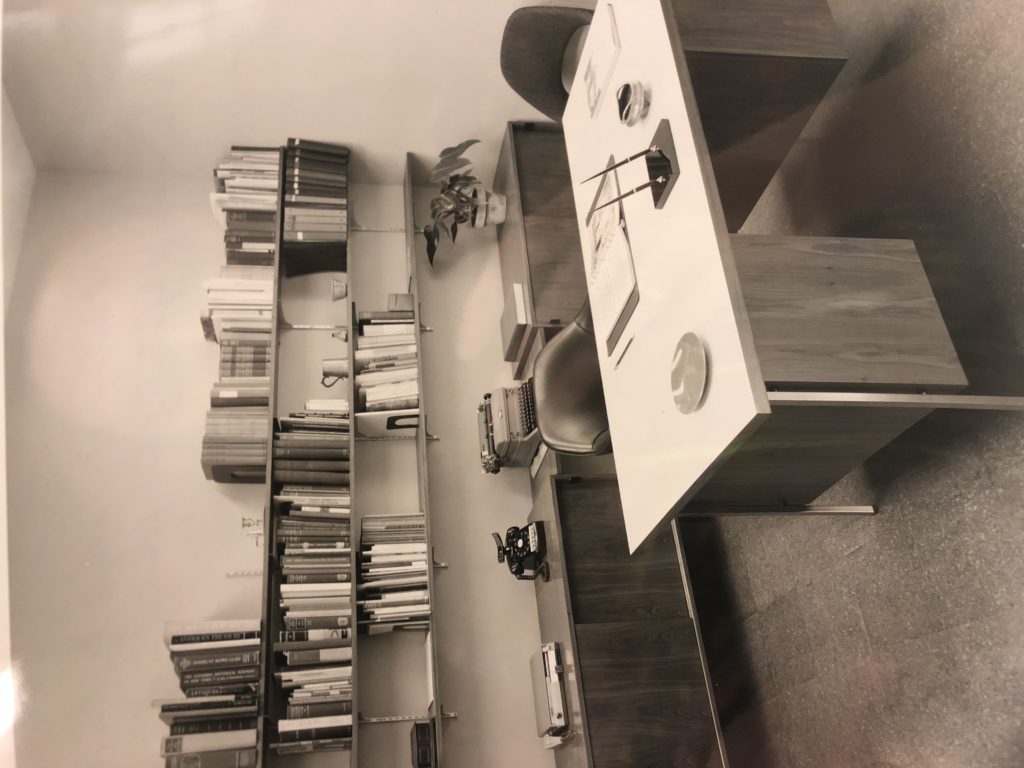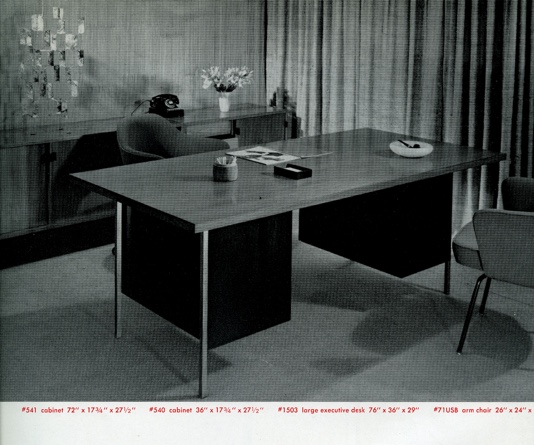
Seventy-eight percent of the midcentury modern furniture that exists at Winterthur today can be attributed to what is now ubiquitously referred to as Knoll. These furnishings were purchased in relatively large batch orders and used to furnish offices and professional spaces with a midcentury modern aesthetic. On February 2, 1959, Henry Francis du Pont’s Winterthur Museum placed a large order for Knoll furnishings. Invoices from Knoll totaled $3,779.85. The furniture was ordered for the South Wing Office Building that would include a Research Floor and Winterthur’s first academic library, the Belknap Library. The initial order lists five desks, at least ten chairs, and three typewriter platforms. This was just the first of at least five different orders that Winterthur would place with a Knoll distributor based out of Washington, D.C. These furnishings were used to create interior spaces that were composed entirely of midcentury modern furniture. Based on the volume of furnishings purchased, it can be assumed that most of the offices at Winterthur featured complete midcentury modern interiors like the one shown on the left.
This photograph of a Winterthur office is a clear articulation of a complete midcentury modern interior that exemplifies the Knoll aesthetic. It not only displays Knoll furniture like the Florence Knoll double pedestal desk and the Saarinen 72 chair, but it also features humanizing touches like the pewter tankard on the bookshelf. These office accessories were crucial to personalizing environments with industrial materials that could otherwise appear austere in midcentury modern interiors. The personality and personalization reflected in Winterthur offices were central tenants of the Knoll design philosophy.
What separated Knoll from other midcentury modern furniture companies was the Planning Unit founded in 1946 and led by Florence Knoll. The Planning Unit was able to create designed spaces that shaped and expressed the nature of organizations. The Knoll interior was not just an expression of a midcentury modern aesthetic; it was a material statement of a company’s identity. Knoll built its brand by creating spaces that cultivated a distinct corporate culture. The objects that compose Winterthur’s midcentury modern furniture collection are direct design disseminations from Florence Knoll and the Planning Unit that were used to express a professional culture at Winterthur.


Winterthur did not hire the Planning Unit to furnish the interior spaces at Winterthur. However, the interior spaces at Winterthur directly mimicked Planning Unit designs. Today, Knoll furnishings are proudly displayed and used in offices throughout the museum. The longer the tenure of the staff member, the more likely there are to be Knoll furnishings in his or her office. Though these offices are no longer complete midcentury modern interiors, the continued existence of these furnishings speaks to the staff’s thoughtful appreciation of American design.
